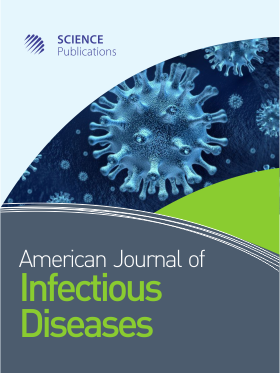Antimicrobial Susceptibility of Community Acquired Escherichia coli in Urinary Tract Infections (UTI) in Benin for Eleven Years (2005-2015)
- 1 National Laboratory Fighting Against AIDS, Benin
- 2 National Laboratory Fighting Against Tuberculosis, Benin
- 3 Department of Medecine, Mauritania
- 4 Department of Medecine, Benin
- 5 Department of Medecine Laboratory of Bacteriology and Virology, Senegal
- 6 Department of Medecine, Burkina Faso
- 7 Department of Human Biology, Benin
Abstract
Antimicrobial resistance became a growing public health problem in the world and Escherichia coli (E. coli) appeared as one of nine bacteria commonly causing infections in community and hospitals. It prevalence and it resistance to antibiotics were evaluated in Benin throughout an eleven year period. In this retrospective study, routine urine samples from patients collected at the National Laboratory (NL) of Health Ministry during the period 2005-2015 were analyzed. Samples higher than 103 CFU/mL bacterial growth were considered positive and for these cases, the bacteria were identified and Antimicrobial Susceptibility Test (AST) was performed. From the 4467 samples analyzed, 1455 (32.6%) were positive with E. coli preponderance (38.3%) of all isolated germs and (58.5%) of enterobacteriaceae. Most of the isolates were susceptibility to netilmicin (80%), gentamycin (93%), chloramphenicol (70%), pipemidic acid (60%), nalidixic acid (75%), ciprofloxacin (75%), amoxicillin/clavulanic acid (80%) and nitrofurantoin (100%). Susceptibility rates increased for cefotaxim (78-100%), ceftriaxon (71-100%) and aztreonam (67-100%). Resistances were observed for minocyclin (70%), Trimethoprim/Sulfamethoxazole (TMP-SMX) (60%), ampicillin (67%), amoxicillin (75%), carbenicillin (86%), cephalothin and cephalexin (50 and 80% respectively). The use of drugs such as minocyclin, ampicillin, amoxicillin, carbenicillin, cephalothin, cephalexin and trimethoprim/sulfamethoxazole does not seem appropriate for empirical treatment of UTI in Benin.
DOI: https://doi.org/10.3844/ajidsp.2017.21.27

- 6,090 Views
- 3,236 Downloads
- 1 Citations
Download
Keywords
- Community
- Urinary Tract Infections
- Escherichia coli
- Antimicrobial Effectiveness
- Benin
